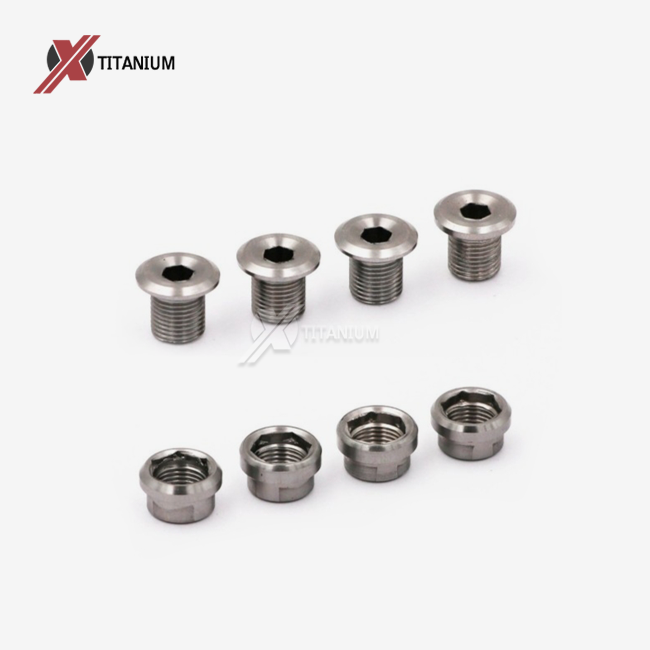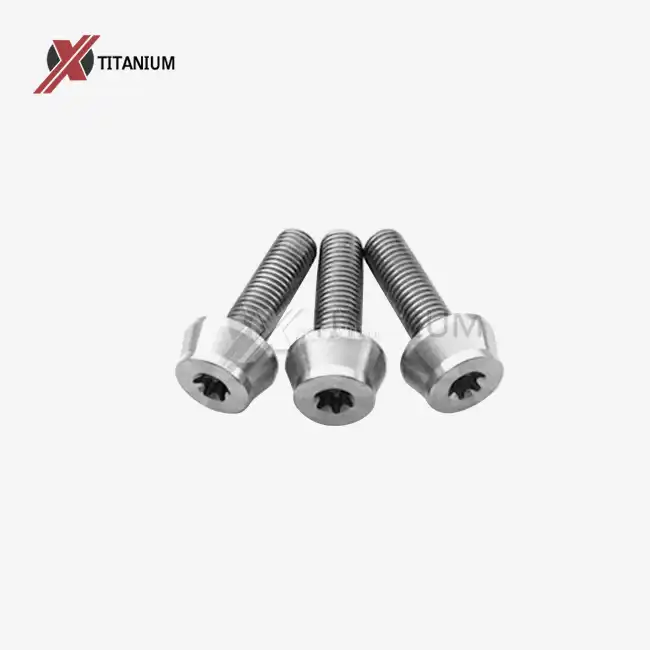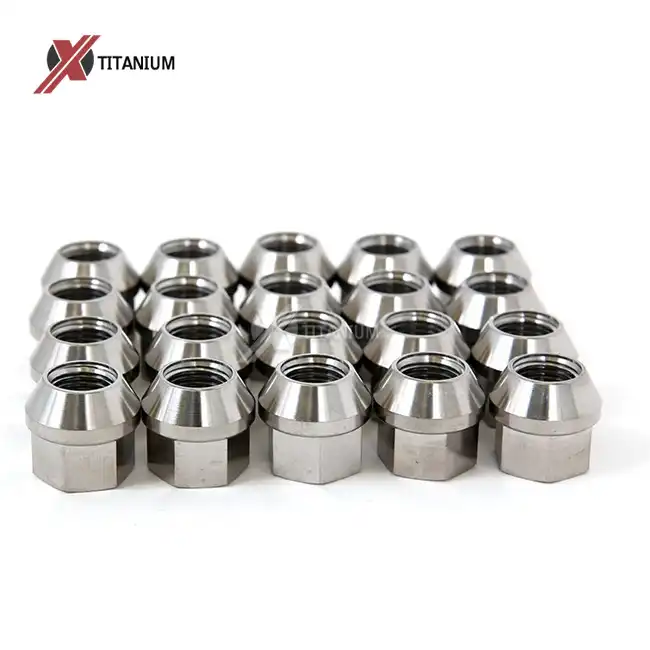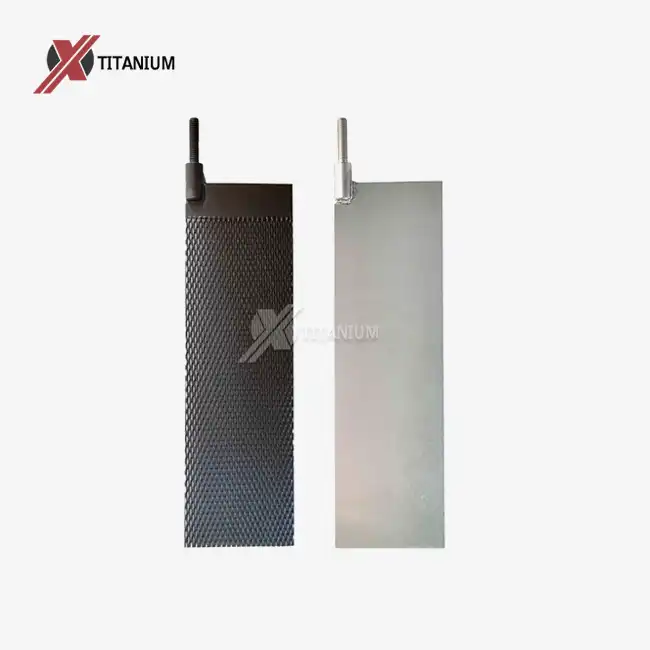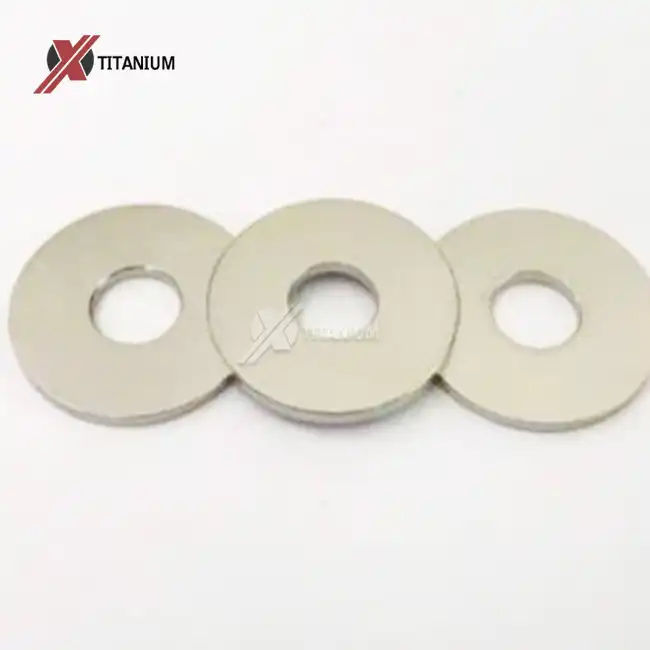Grasping the Superiority of Titanium Chain Ring Bolts
The Unique Properties of Titanium in Cycling Components
Titanium has revolutionized the cycling industry with its exceptional characteristics. When it comes to chain ring bolts, titanium alloys offer a perfect blend of attributes that make them superior to traditional materials. The Ti-6Al-4V alloy, commonly used in these bolts, provides an impressive tensile strength of 1,200 MPa, surpassing that of many steel varieties. This extraordinary strength ensures that the chainrings remain securely fastened, even under the most demanding riding conditions.
Moreover, titanium's low density translates to significant weight savings. Titanium chain ring bolts typically weigh about 40-50% less than their steel equivalents, contributing to the overall reduction in bike weight. This weight difference may seem negligible for a single bolt, but when considering the entire set and the principle of marginal gains in cycling, it becomes a noteworthy advantage.
Another key attribute of titanium is its exceptional corrosion resistance. Unlike steel bolts that may rust over time, especially when exposed to sweat, rain, or road salts, titanium bolts maintain their integrity and appearance. This resistance to corrosion not only ensures longevity but also makes maintenance easier, as the bolts remain free from oxidation and are less likely to seize.
Comparative Analysis: Titanium vs. Steel and Aluminum Bolts
When comparing titanium chain ring bolts to their steel and aluminum counterparts, several key differences emerge. Steel bolts, while strong and relatively inexpensive, are significantly heavier and prone to corrosion. Aluminum bolts, although lightweight, lack the strength of titanium and may be prone to stripping or failure under high torque or impact.
Titanium bolts strike an optimal balance between these extremes. They offer strength comparable to or exceeding that of steel, with a weight closer to aluminum. The following comparison illustrates these differences:
- Strength: Titanium ≥ Steel > Aluminum
- Weight: Aluminum < Titanium < Steel
- Corrosion Resistance: Titanium > Aluminum > Steel
- Durability: Titanium > Steel > Aluminum
- Cost: Steel < Aluminum < Titanium
While titanium bolts may have a higher initial cost, their longevity and performance characteristics often make them more cost-effective in the long run. Cyclists who invest in titanium chain ring bolts typically enjoy years of trouble-free use, with no need for frequent replacements due to corrosion or failure.
Manufacturing Processes and Quality Control for Titanium Chain Ring Bolts
Precision CNC Machining and Threading Techniques
The production of high-quality titanium chain ring bolts involves sophisticated manufacturing processes, with CNC (Computer Numerical Control) machining at the forefront. This advanced technology ensures unprecedented precision and consistency in bolt production. The process begins with high-grade titanium alloy rods, typically Ti-6Al-4V, which are fed into CNC lathes.
These machines execute a series of precise cuts and threading operations, guided by computer-programmed instructions. The threading process is particularly critical, as it determines the bolt's ability to securely fasten the chainring. Advanced threading techniques, such as roll threading, are often employed to create threads with superior strength and fatigue resistance.
The CNC machining process also allows for tight tolerances, often within 0.01mm, ensuring perfect fit and interchangeability. This level of precision is crucial for maintaining proper chain alignment and preventing premature wear of drivetrain components.
Surface Treatments and Finishes for Enhanced Performance
After machining, titanium chain ring bolts undergo various surface treatments to enhance their performance and aesthetics. While titanium naturally forms a protective oxide layer, additional treatments can further improve its properties:
- Anodizing: This electrochemical process creates a thicker, more durable oxide layer. It not only enhances corrosion resistance but also allows for color customization. Cyclists can choose from a range of colors including gold, blue, purple, and black, adding a personal touch to their bike's appearance.
- Nitriding: A heat treatment process that diffuses nitrogen into the titanium surface, significantly increasing hardness and wear resistance. This is particularly beneficial for the bolt head, which may be subject to tool contact during installation and removal.
- Polishing: A smooth, polished finish reduces surface friction and makes cleaning easier. It also enhances the bolt's aesthetic appeal, particularly important for high-end bicycles where every component is scrutinized.
These surface treatments not only improve the bolts' functional properties but also contribute to their longevity and resistance to environmental factors. The ability to customize the appearance of titanium bolts through anodizing also appeals to cyclists who view their bikes as an extension of their personal style.
Application and Benefits in High-Performance Cycling
Impact on Bike Weight and Performance
The use of titanium chain ring bolts in high-performance cycling extends far beyond mere weight reduction. While the weight savings are indeed significant – typically 40-50% lighter than steel equivalents – the impact on overall bike performance is multifaceted.
Reduced rotational mass is a key benefit. By lightening the components at the crankset, titanium bolts contribute to improved acceleration and more efficient power transfer. This is particularly noticeable during sprints or when quickly changing pace in criterium races.
The strength of titanium bolts also allows for more precise torque applications. Unlike aluminum bolts that may require careful tightening to avoid stripping, titanium bolts can be securely fastened to the manufacturer's specifications without fear of damage. This ensures optimal chainring stability, which is crucial for efficient power transfer and precise shifting.
Longevity and Maintenance Considerations
The longevity of titanium chain ring bolts is a significant advantage in both competitive and recreational cycling. Their resistance to corrosion means they maintain their integrity even in harsh conditions, such as coastal areas with salt-laden air or in wet climates. This durability translates to fewer replacements over the life of the bicycle, reducing long-term costs and maintenance downtime.
Maintenance of titanium bolts is minimal. Unlike steel bolts that may require regular inspection for rust and periodic replacement, titanium bolts often last the lifetime of the bicycle. Their resistance to galling (a form of wear caused by adhesion between sliding surfaces) also means they're less likely to seize, making future maintenance or upgrades easier.
For cyclists participating in ultra-endurance events or bikepacking adventures, the reliability of titanium bolts provides peace of mind. The last thing a rider needs during a multi-day event is a failed component, and titanium chain ring bolts significantly reduce this risk.
Environmental Impact and Sustainability
While the initial production of titanium is energy-intensive, the long-term environmental benefits of using titanium chain ring bolts are worth considering. Their longevity means fewer replacements over time, reducing waste and the need for new production. Additionally, titanium is 100% recyclable, and the recycling process requires significantly less energy than primary production.
The corrosion resistance of titanium also eliminates the need for protective coatings or treatments that might contain environmentally harmful substances. This aligns well with the growing trend towards more sustainable and environmentally friendly cycling practices.
Conclusion
Titanium chain ring bolts represent a pinnacle of engineering in cycling components. Their unmatched combination of strength, light weight, and corrosion resistance makes them an ideal choice for cyclists seeking the ultimate in performance and reliability. While the initial investment may be higher than traditional materials, the long-term benefits in terms of performance, durability, and reduced maintenance make them a wise choice for serious cyclists and bike enthusiasts.
As cycling technology continues to evolve, titanium bolts stand as a testament to the importance of material science in pushing the boundaries of what's possible in bike design and performance. For those looking to optimize every aspect of their riding experience, titanium chain ring bolts offer a small but significant upgrade that can make a real difference.
For more information about titanium chain ring bolts and other high-performance cycling components, please contact us at info@cltifastener.com or djy6580@aliyun.com. Our team of experts is ready to help you find the perfect titanium solutions for your cycling needs.
